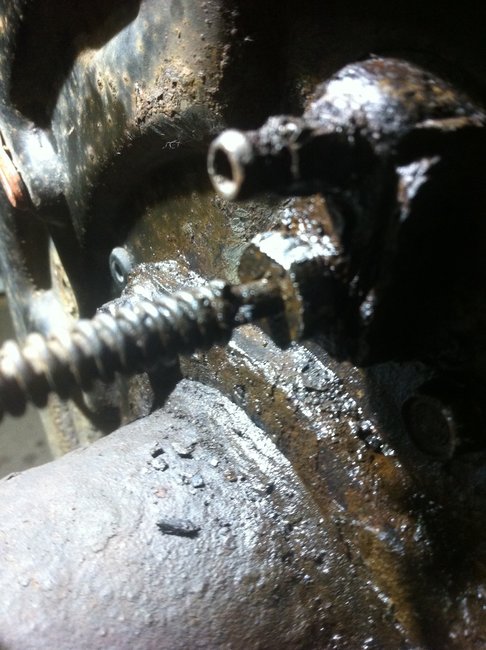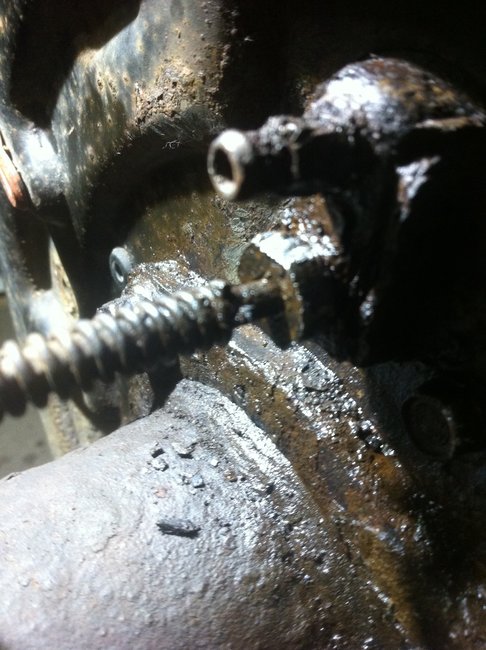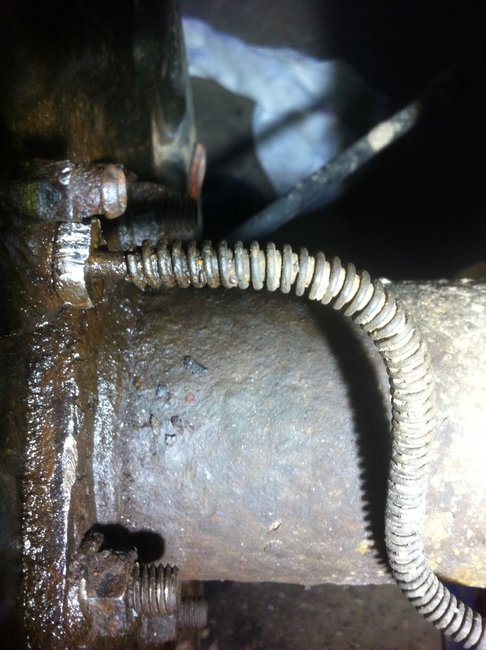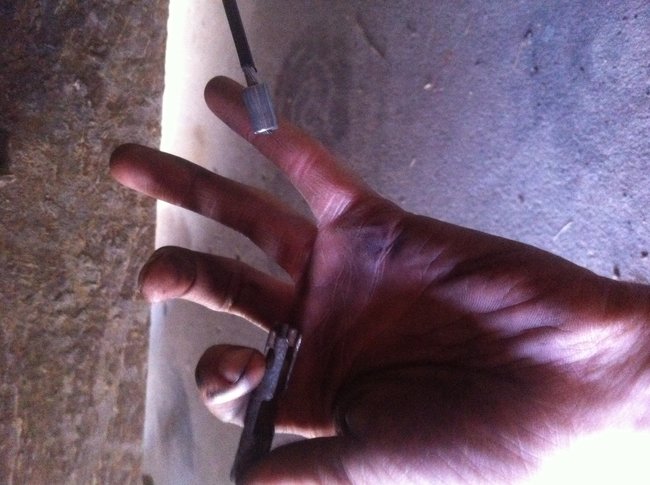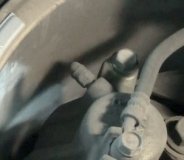This will actually be pretty easy, but I am not going to tell you how I would handle this until you promise me you will wash off all the penetrating oil with brake parts cleaner. Using that is the number one way this can turn into a real expensive repair that could exceed the value of the truck.
If any hint of petroleum product makes it into the brake fluid, the entire hydraulic system will become contaminated, and that will soften and destroy all the rubber parts that contact the brake fluid. The only proper repair for that is to remove every part that contains rubber that contacts the brake fluid, flush and dry the steel lines, then install all new rubber parts. That includes wheel cylinders, calipers, master cylinder, three or four rubber flex hoses, combination valve assembly, bladder seal under the reservoir cap, and if used, the height-sensing proportioning valve. Those are usually found on pickup trucks and minivans. If you have anti-lock brakes, the four-wheel hydraulic controller must be replaced. If you have rear-wheel ABS, the dump valve assembly must be replaced. If any rubber part is overlooked, the contamination will leach out of it and recontaminate the new brake fluid.
Most brake system specialists will not even allow things like power steering fluid, engine oil, transmission fluid, or axle grease near their jobs. We even wash our hands before handling the seals for caliper and wheel cylinder rebuild kits to prevent getting fingerprint grease on them.
Now that you have been properly warned, do not even waste your valuable time trying to solve the nut problem. Even if you do get it loose in the wheel cylinder, it will be rusted to the line, and the line will twist off. Do you really want to reinstall that nut? Cut the line right next to the wheel cylinder only if that is necessary to get the wheel cylinder off. Cut the line on its other end where it most likely is attached to the brass block at the end of the rubber flex hose. That will be on top of or next to the rear axle's center section. Cut that line real close, because the next step is to pound on a six-point socket. Line nuts are very soft. They will deform easily to allow the socket to be driven on. If all you have is a 12-point socket, stop right there and find a 6-point. No sense making more frustration for yourself. Even if the truck is real rusty, this nut will come loose very easily because it is screwed into brass.
Replace the entire line, along with the new wheel cylinder. Pre-manufactured lines are very inexpensive. Get one that is only slightly longer than it has to be, then put some gentle bends in it to take up the extra length. Avoid bending in a high spot where air can be trapped.
Here are some tidbits of wisdom I have acquired over the years. You are going to add a lot of misery to the job if you let the brake fluid reservoir run empty, especially if you have four-wheel anti-lock brakes. To prevent that, place a stick between the seat cushion and the brake pedal to hold the pedal down about two inches. Gravity will not be strong enough to pull the brake fluid past the rubber lip seals in the master cylinder.
Once the new line and wheel cylinder are installed, remove the stick, and loosen the cover on the reservoir. Open the bleeder screw on the wheel cylinder, then wait for brake fluid to show up. Do not push the brake pedal unless the fluid does not start flowing on its own. With such a short new line, gravity-bleeding should only take no more than a minute. Once you see fluid flowing and there's no air bubbles, close the bleeder screw, then "irritate" the brake pedal by hand, just enough to turn on the brake lights a couple of times. That will wash any sticking air bubbles into the wheel cylinder. Open the bleeder screw once more just long enough to burp out those couple of bubbles.
If you ever think it is necessary to resort to pedal-bleeding with a helper, do not ever push the brake pedal over half way to the floor. Crud and corrosion build up in the lower halves of the bores in the master cylinder where the pistons do not normally travel. Running the pedal to the floor runs the rubber lip seals over that crud and can rip them. That results in a slowly-sinking brake pedal, and that often does not show up until two or three days later.
As long as you are in there, check that the brake shoes come to rest against the large anchor pin at the top of the backing plate. Also, verify you can push the parking brake strut bar, between the middle of the two shoes, forward with your thumb, against the anti-rattle spring. That bar should move a good 1/8". If the bar is tight or the shoes are not fully retracted, a parking brake cable is sticking partially-applied.
This is also a good time to pull the shoes away from the backing plates just enough to look behind them to see if grooves have worn into the backing plate. This is a bigger problem on GM vehicles because the edge of the shoe frames grind those grooves. Other manufacturers bend over little tabs on their shoe frames to spread out the contact area and reduce the tendency for those grooves to form. Once those grooves become bad enough, a shoe can fail to apply under light pedal pressure, and in extreme cases can fail to release after normal to hard braking.
Do not get any grease or brake fluid on the friction surfaces of the shoe linings or drums. If you do, that can be washed off with brake parts cleaner, but it must be done before those parts become hot from braking. If that contamination is there when the parts become hot, it will soak into the linings and into the cast iron, which is porous, and never come out. That will cause an irritating brake squeal.
Wednesday, April 14th, 2021 AT 1:50 PM
